Use Temperature And Humidity Dht11/dht21/dht22 Sensor Module
About the project
Connect Temperature and Humidity DHT11/DHT21/DHT22 Sensor Module to Arduino, and program it - quick and easy.
Project info
Difficulty: Easy
Estimated time: 1 hour
License: GNU General Public License, version 3 or later (GPL3+)
Items used in this project
Hardware components
Software apps and online services
Story
DTH11/DTH21/DTH22 and AM2301 are very popularly combined Temperature and Humidity Arduino sensors.
In this Tutorial, I will show you how easy it is to program Arduino to use them with Visuino - an easy-to-use graphical development environment for Arduino.
Step 1: Components
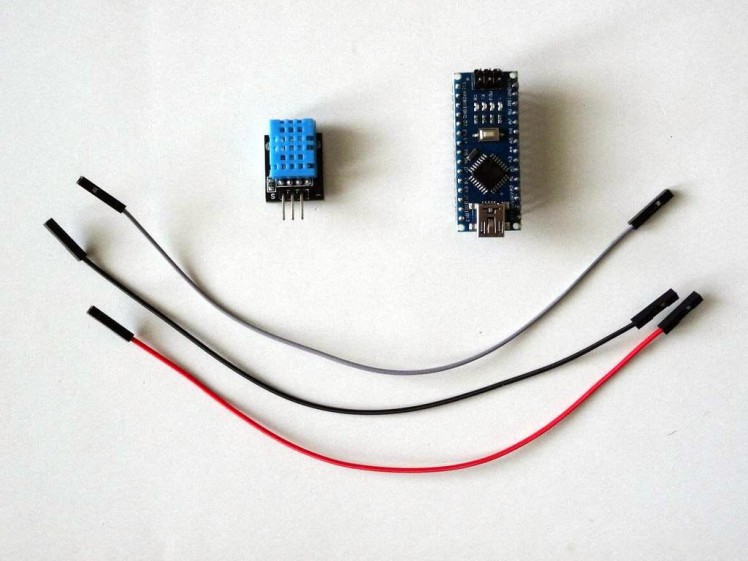
- One Arduino compatible board (I use Arduino Nano, because I have one, but any other will be just fine)
- One DHT11 Sensor Module I got from this cheap 37 sensors set
- 3 Female-Female jumper wires
1 / 5 • Picture 1
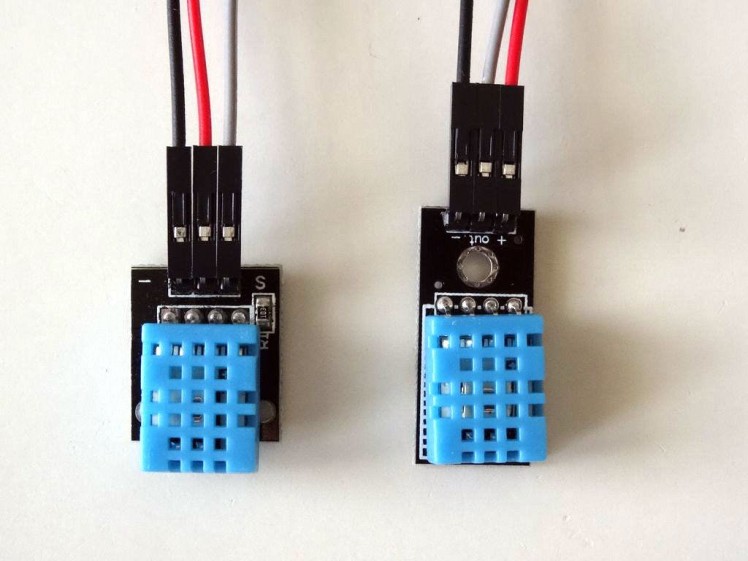
Picture 1
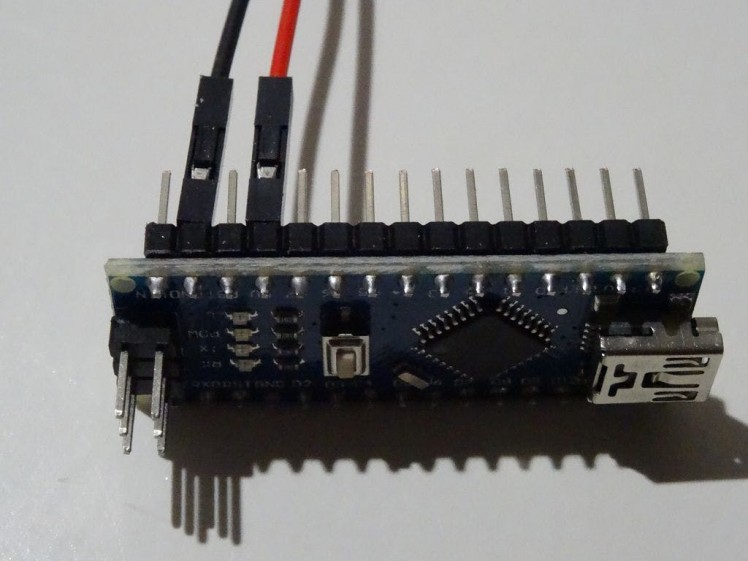
Picture 2
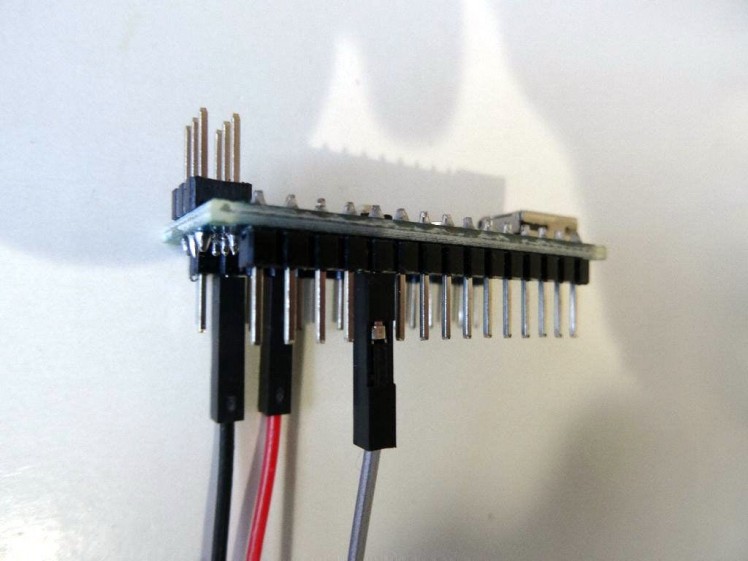
Picture 3
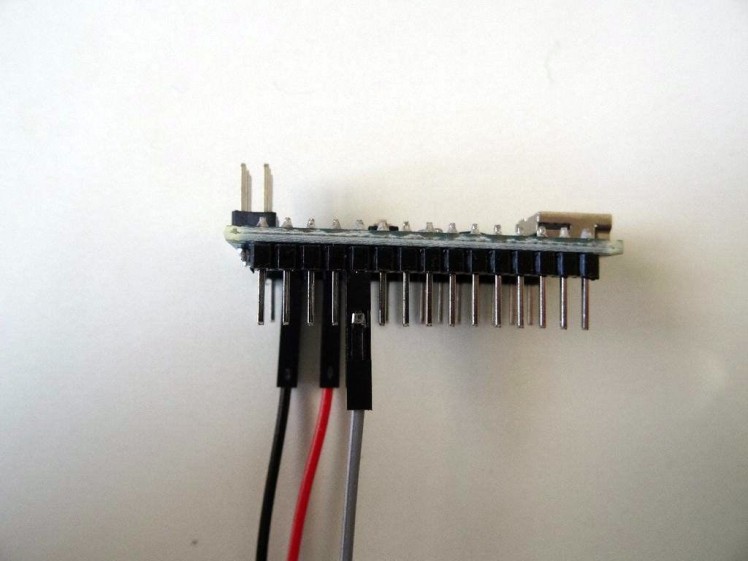
Picture 4
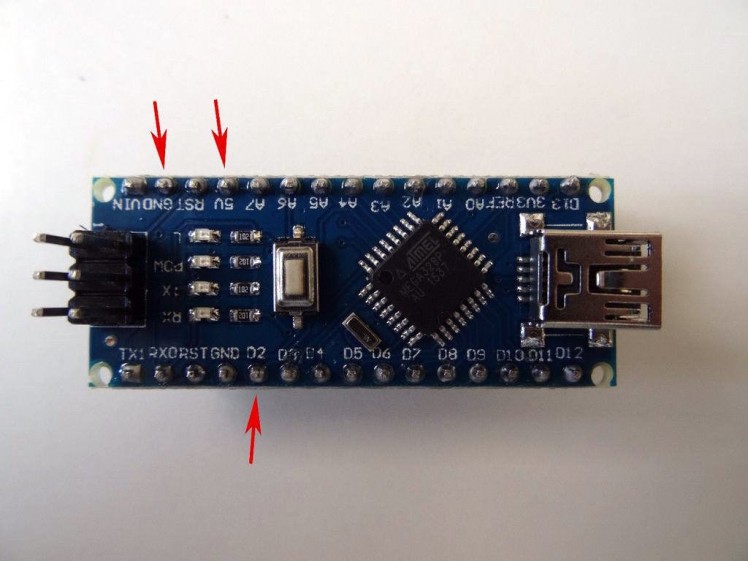
Picture 5
- Connect Ground (black wire), Power (red wire), and Data (gray wire) to the DHT11 Module. (Picture 1 shows two different types of DHT11 sensor modules; As you can see the pins may differ, so connect carefully!)
- Connect the other end of the Ground wire (black wire) to Ground pin of the Arduino board. (Picture 2)
- Connect the other end of the Power wire (red wire) to the 5V Power pin of the Arduino board. (Picture 2)
- Connect the other end of the Data wire (gray wire) to Digital pin 2 of the Arduino board. (Picture 3 and 4)
- Picture 5 shows where the Ground, 5V Power, and Digital 2 pins of the Arduino Nano are.
1 / 2 • Picture 1
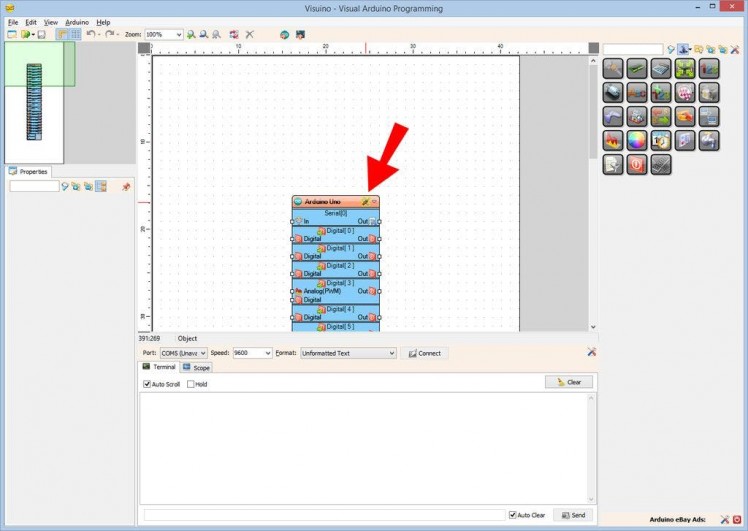
Picture 1

Picture 2
To start programming the Arduino, you will need to have the Arduino IDE installed from here: http://www.arduino.cc/
Please be aware that there are some critical bugs in Arduino IDE 1.6.6.
Make sure that you install 1.6.7 or higher, otherwise this Tutorial will not work!
The Visuino: https://www.visuino.com also needs to be installed.
- Start Visuino as shown. (Picture 1)
- Click on the "Tools" button on the Arduino component (Picture 1) in Visuino.
- When the dialog appears, select Arduino Nano as shown. (Picture 2)
1 / 4 • Picture 1
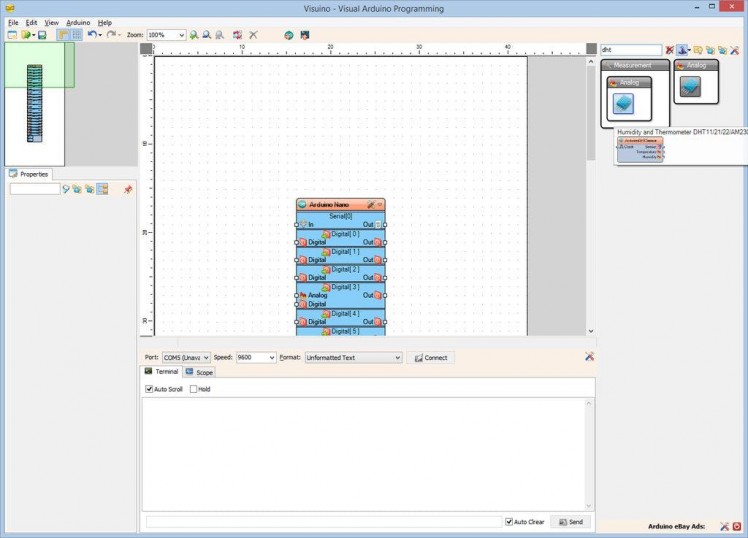
Picture 1
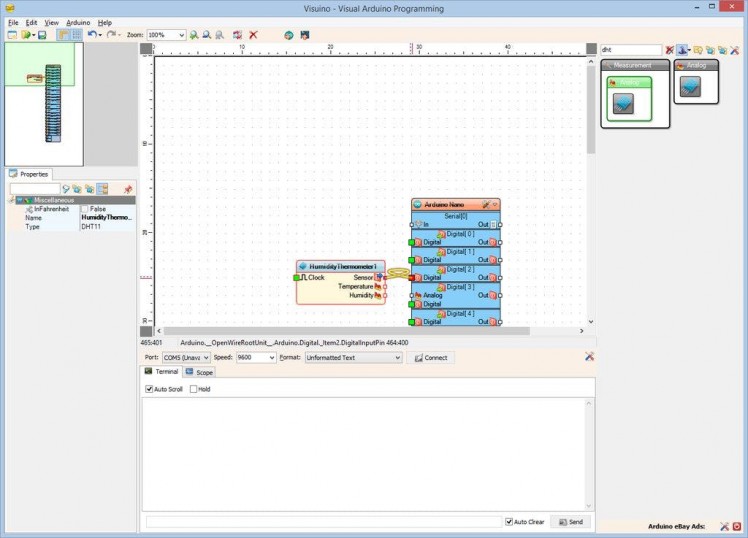
Picture 2
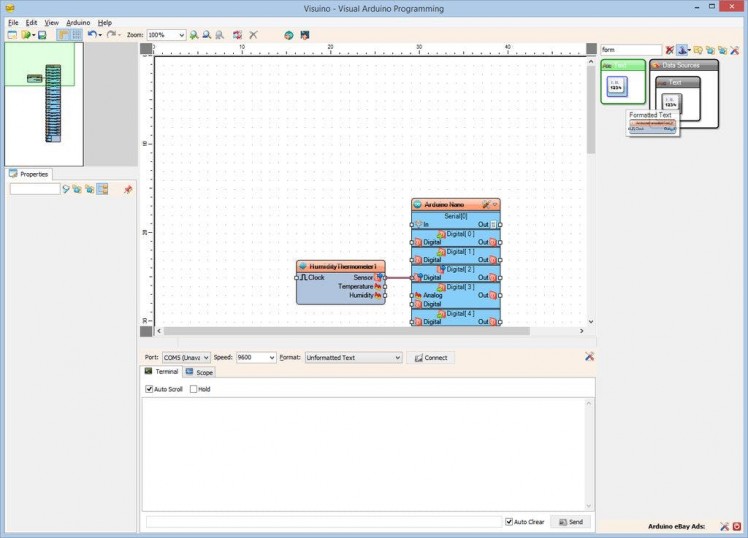
Picture 3
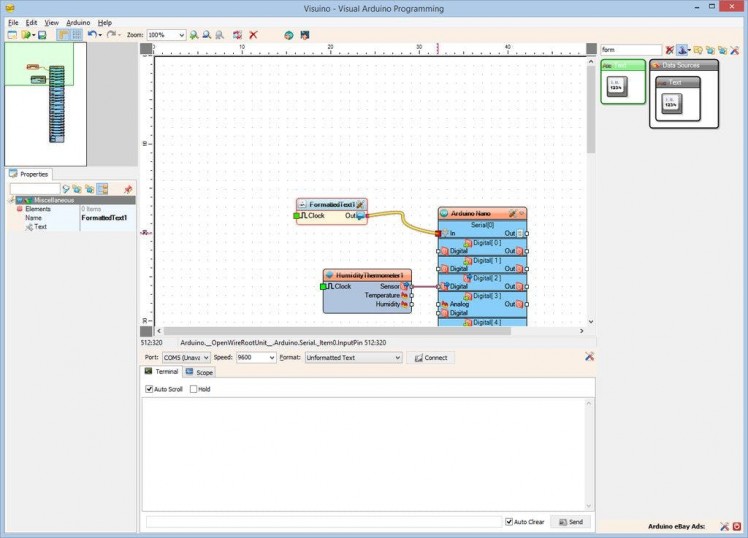
Picture 4
- Type "dht" in the Filter box of the Component Toolbox then select the "Humidity and Thermometer DHT11/21/22/AM2301" component (Picture 1), and drop it in the design area
- Connect the "Sensor" pin of the HumidityThermometer1 component to the "Digital" input pin of the "Digital[ 2 ]" channel of the Arduino component (Picture 2)
- Type "form" in the Filter box of the Component Toolbox then select the "Formatted Text" component (Picture 3), and drop it in the design area
- Connect the "Out" output pin of the FormattedText1 component to the "In" input pin of the Serial[ 0 ] channel of the Arduino component (Picture 4)
1 / 6 • Picture 1
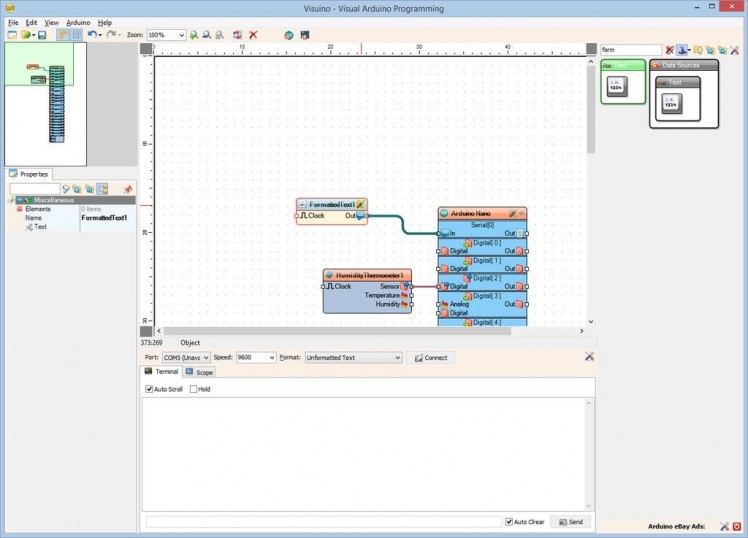
Picture 1
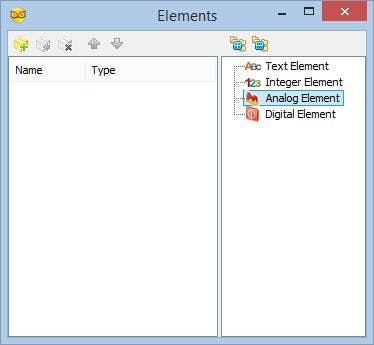
Picture 2
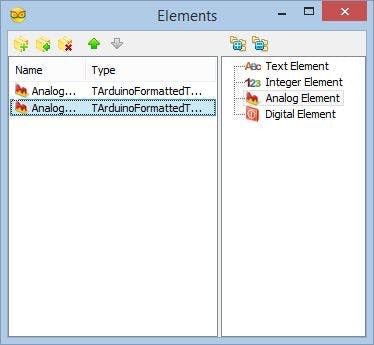
Picture 3
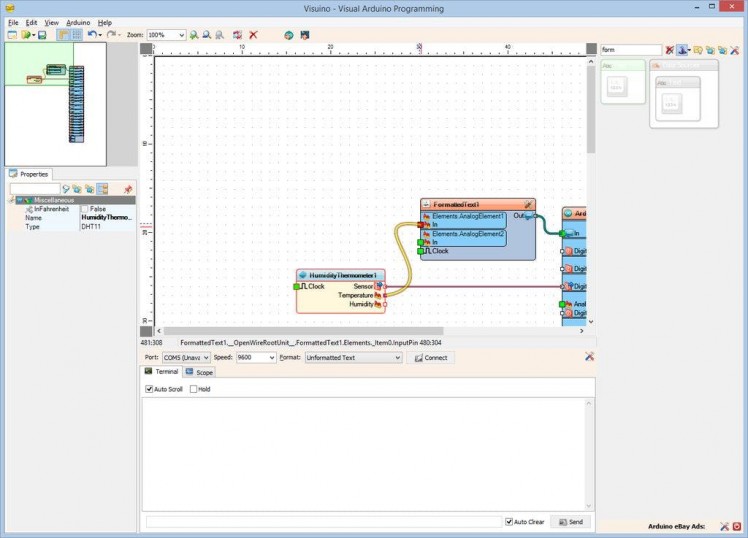
Picture 4
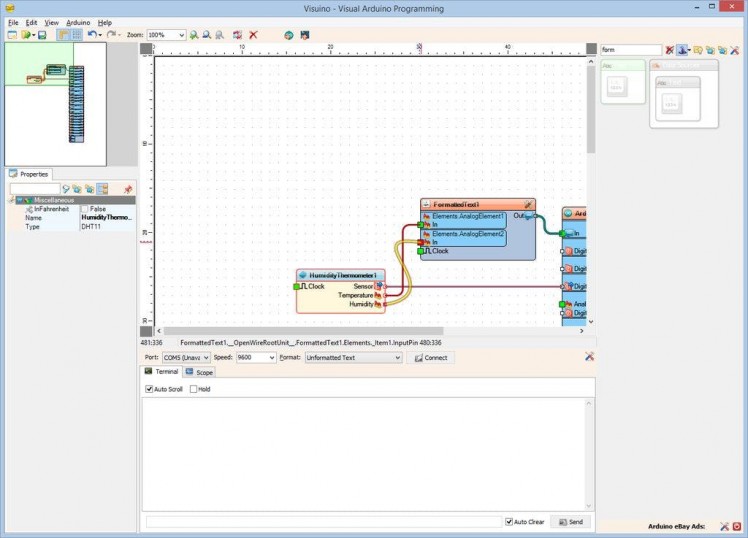
Picture 5
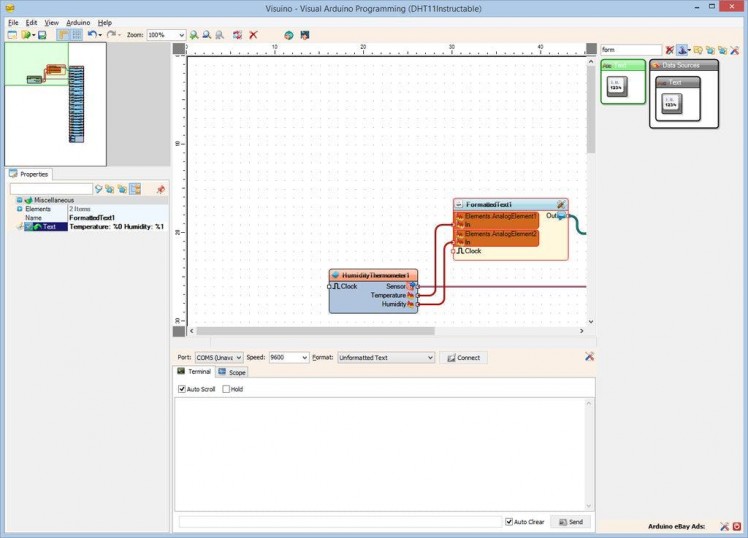
Picture 6
- Click on the "Tools" button of the FormattedText1 component. (Picture 1)
- In the Elements editor, double click 2 times on the Analog Element to add 2 of them (Picture 2 and 3), then close the Elements editor.
- Connect the "Temperature" output pin of the HumidityThermometer1 component to the "In" pin of the AnalogElement1 of the FormattedText1 component. (Picture 4)
- Connect the "Humidity" output pin of the HumidityThermometer1 component to the "In" pin of the AnalogElement2 of the FormattedText1 component.(Picture 5)
- Set the value of the Text property of the FormattedText1 component to "Temperature: %0 Humidity: %1" (Picture 6). The %0 will be replaced with the value from AnalogElement1, and %1 will be replaced with the value from AnalogElement2.
1 / 2 • Picture 1
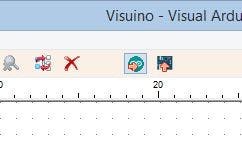
Picture 1
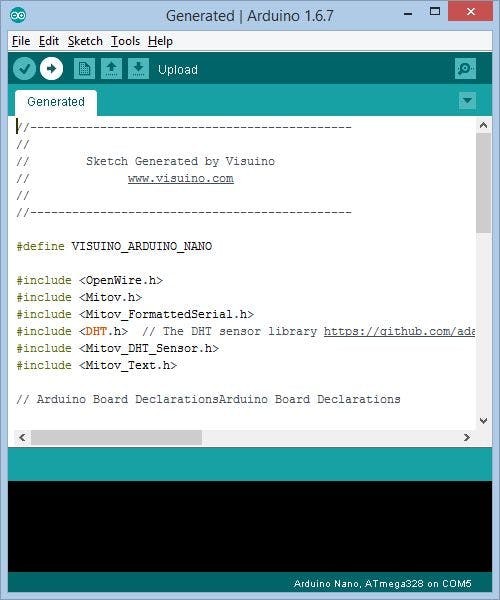
Picture 2
- In Visuino, Press F9 or click on the button shown in Picture 1 to generate the Arduino code, and open the Arduino IDE.
- In the Arduino IDE, click on the Upload button, to compile and upload the code. (Picture 2)
1 / 3 • Picture 1
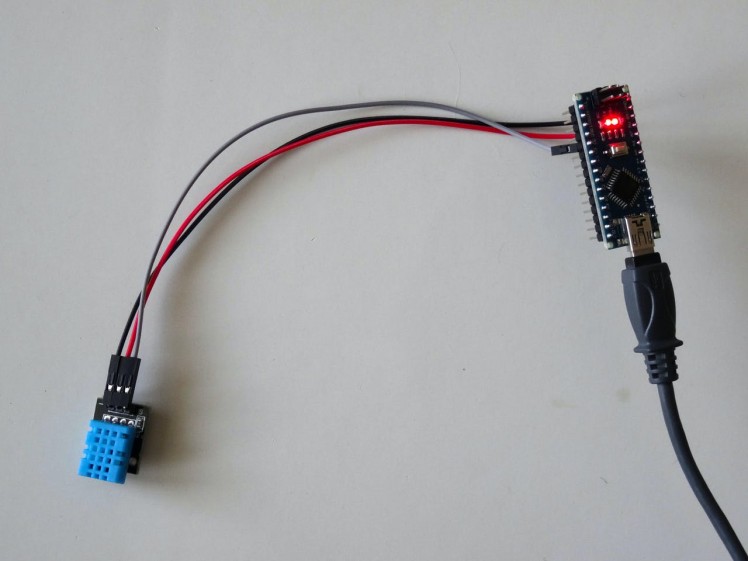
Picture 1

Picture 2
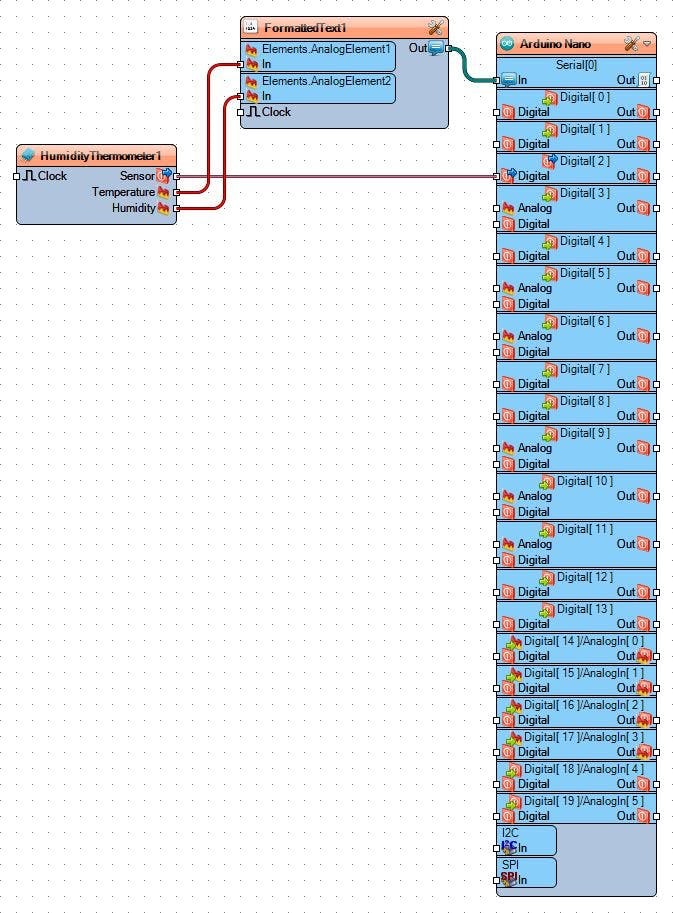
Picture 3
You can see the connected and running Humidity and Temperature sensor in Picture 1.
If you open Serial Terminal in the Arduino IDE or Visuino, you will see the Temperature and Humidity measured by the sensor. (Picture 2)
On Picture 3 you can see the complete Visuino diagram.
Congratulations! You have created a temperature and humidity measuring Arduino project in Visuino.
Also attached is the Visuino project, that I created for this Tutorial. You can download and open it in Visuino: https://www.visuino.com


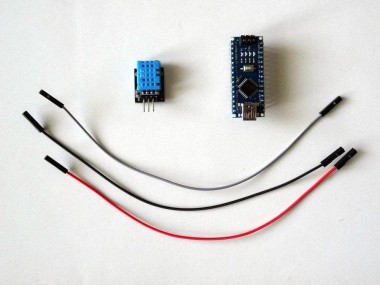


















Leave your feedback...